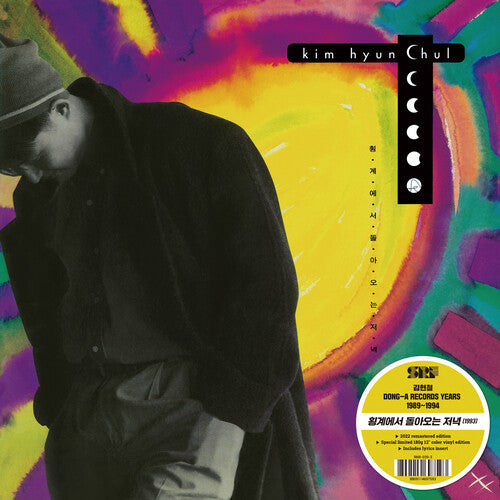Seoul Record Fair
Kim Hyun-Chul - KIM HYUN-CHUL VOL. 3
Kim Hyun-Chul - KIM HYUN-CHUL VOL. 3
Usually ships within 1 to 2 weeks.
Couldn't load pickup availability
SKU:SOUX393.1
Share
Kim Hyun-Chul DONG-A RECORDS YEARS. The psychedelic-tinged pop / rock sounds masterminded by Shin Joong-hyun, and the college folk scene spearheaded by Kim Min-ki formed the very heart of Korean pop music throughout the 1970s. However, this beating heart would be stifled, intentionally, as the dictatorship ramped up it's repressive practices in the mid-1970s. Countless rock and folk acts were censored on charges of 'indecency'. The leading artists of the time, such as Shin Joong-hyun and Kim Min-ki, found themselves in a situation where they could neither play concerts nor release new music. While great bands like Sanullim managed to emerge even amid such dark times, radio and TV broadcasts remained subject to government rating and censorship. Thus, music broadcasts that reached the masses consisted of little more than romantic ballads, gayo for older generations, and sanitized 'decent' dance music. Although the new regime that took power in the 1980s made some conciliatory gestures, censorship remained firmly in place. Musicians who were forced into a long hiatus eventually gave up on music entirely or faced difficulties adjusting to newer trends. Around the mid-1980s, during which school bands began playing heavy metal, breaths of fresh new air were emerging in Korea's music scene. Independent label Dong-a Records was one of the central forces in this new wave. For singer / songwriters looking to create something new and different, Dong-a provided not only the top session musicians of the time but also free rein throughout the recording process. As musicians gained the ability to rise to success without having to make TV appearances, new talent began flocking to Dong-a. Perhaps as a consequence of Korea's hosting of the Olympic Games in 1988, radio broadcasters began playing a somewhat broader range of music than they previously had, despite remaining beholden to government influence. Fusion jazz was among the new music styles that were introduced. Seeing that audience reactions were favorable, agencies who worked with major labels began releasing jazz / fusion records. Soon, new artists emerged whose style was rooted in such influences. Among them were Cho Dong-ik and Lee Byung-woo, who formed the band One Day. The 'gayo' style, which had begun following a somewhat trite pattern, became enriched with fusion jazz-style arrangements and musicianship. This encouraged Korean listeners, many of whom had almost exclusively consumed foreign music, to begin seeking out more domestic records and local concerts. Thus, the domestic market started to grow.



